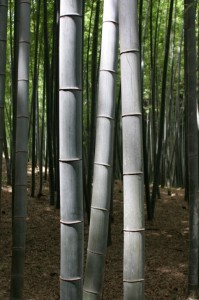Philippine News
DENR-ARMM proposes massive planting of bamboos along Maguindanao rivers
COTABATO CITY — The Department of Environment and Natural Resources–Autonomous Region in Muslim Mindanao (DENR-ARMM) is pitching for the substantial planting of bamboo species along the rivers of Maguindanao province, whose 13 of 36 municipalities were immersed in floodwaters due to bad weather the past two weeks.
“The program to plant bamboos along the rivers of the province is actually a long-term plan that has been included in the region’s 2014 budget,” DENR-ARMM Secretary Kahal Kedtag said.
He added that his department is currently maintaining some 10,000 bamboo seedlings at a nursery in Awang, Datu Odin Sinsuat town of the province.
“The bamboo is a local abundant strong plant whose roots could impede soil erosion, which fills the river with silt deposits causing it to overflow and flood towns,” Kedtag clarified.
He said the DENR-ARMM is currently working alongside with the regional public works department as to when they would embark on the plan with Rio Grande de Mindanao River as the main target of the undertaking.
The Rio Grande de Mindanao, which traverses Maguindanao, is the second largest river system in the Philippines after the Cagayan River of Luzon.
Contributing to the huge 373-kilometer Mindanao waterway, among others, are smaller crisscrossing tributaries like Pulangi and Kabacan Rivers in Bukidnon and North Cotabato provinces, respectively; the Kaduongan River in Buldon, Maguindanao; and the Ala River in the south that also navigates along Ampatuan and Sultan sa Barongis towns in Maguindanao.
Rio Grande de Mindanao, which has an island-wide drainage area of 23,169 kilometers, empties itself along Bukana district in Cotabato City that serves as its mouth to the Moro Gulf.
Since 2011, the river has been clogged with water hyacinths, causing it to overflow and flood Cotabato City, which is contiguous to Maguindanao, after several days of heavy rain.
Kedtag, however, said floods should not be blamed solely on water hyacinths as it forms part of nature’s ecosystem that freshwater fishes as sanctuary especially during daytime when it is hot and to lay their eggs.
He said dredging of the Rio Grande River to rid of its silt buildup still remains as top mitigating measure to circumvent persistent flooding in Maguindanao.






















